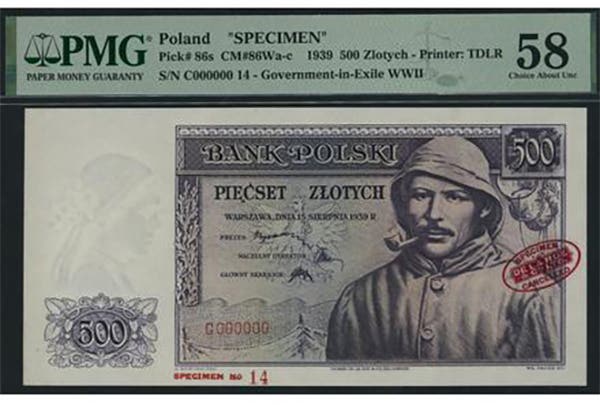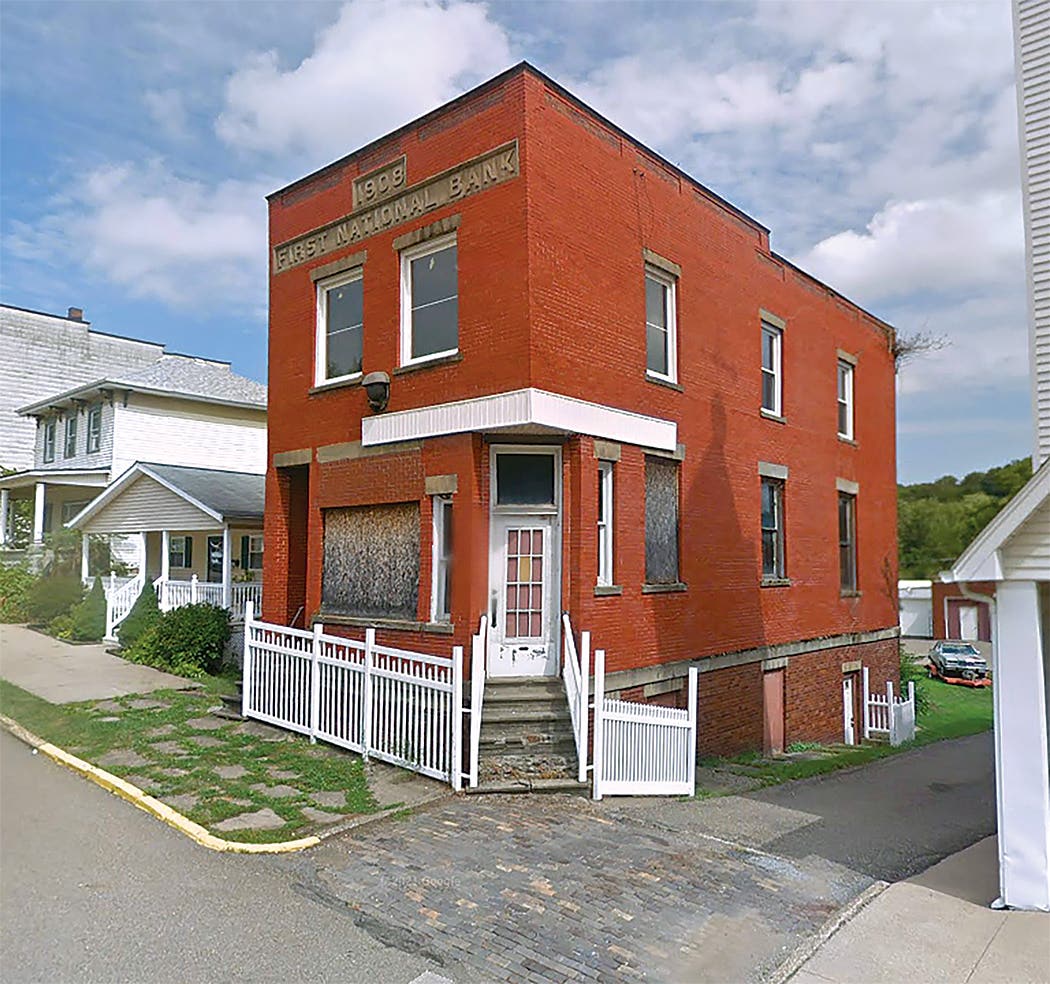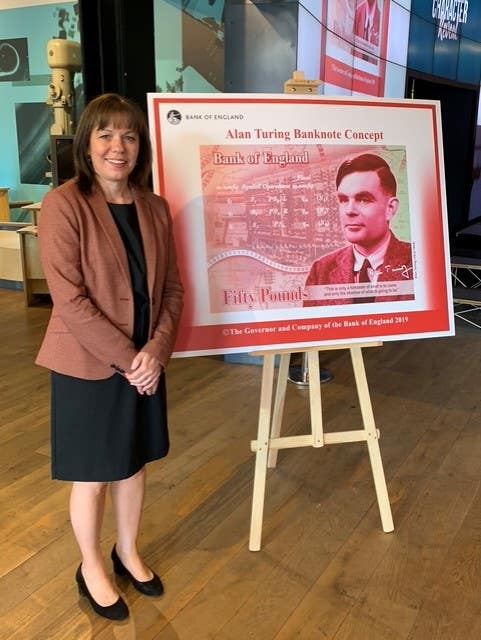Attractive notes from rural Kansas
By Mark Hotz February was quite the cold and snowy month across much of the country. While we in Baltimore shivered at temperatures below 20 degrees, much of the country…
By Mark Hotz
February was quite the cold and snowy month across much of the country. While we in Baltimore shivered at temperatures below 20 degrees, much of the country suffered much worse. One can hardly imagine living in Iowa with temperatures below -20 degrees Fahrenheit. These cold winter days are perfect times for sitting down and perusing one’s collection. I recently obtained two attractive small-town large size Kansas notes and thought that I would write about them for this month’s article. So let’s visit rural Hartford and Nortonville, Kansas.
Hartford, located twenty miles southeast of Emporia via I-35 and State Route 130, sits on the northwest edge of John Redmond Lake in Lyon County, near the Coffey County line. When the Missouri, Kansas and Texas Railroad pushed through the area in 1858, the town site was created and named by a member of the Town Company, A. K. Hawkes, in honor of his home city, Hartford, Conn. The town site proper was laid out in 1858 by Judge Graham and D. F. Bond. Hartford was incorporated as a city of the third class March 12, 1884, and Thomas Campbell was its first mayor. Hartford is and always was a small town. The height of the population occurred in the 1920s, at 575. The current population hovers around 370.
The Hartford National Bank was organized at the end of March 1906 and received charter #8197. It was one of just six national banks located in Lyon County, four of which were in Emporia, the county seat. Accordingly, the Hartford National Bank was a rather small institution, issuing a mere $310,000 in currency before it liquidated in the early summer of 1931. Its circulation consisted of all three types of large size Series of 1902 notes, as well as $10 and $20 small size notes of the Type 1 variety of the Series of 1929. Just a half dozen large and two small notes are reported.
I was fortunate to obtain a very attractive large size $10 note issued by the Hartford National Bank. Although I do not collect Kansas, I do like to add attractive pen-signed notes from small obscure towns to my collection. My note, illustrated above, bears lovely pen signatures of Earl R. Billett, cashier, and M.J. Lalouette, president.
Hartford today is pretty much a specter of its old self. Very little remains on the main street, save the old bank building that now serves as the town offices and community center.
The few other commercial structures that exist are mostly boarded up; a small clapboard library does serve the town. The bank building itself remains quite grand, though, and was one of the motivations for me to buy a note that came through its doors.
Moving north through Kansas, we will now visit Nortonville, a small town in northeast Kansas’ Jefferson County. Nortonville sits at the very north of that county, nestling on the Atchison County line. It is located 16 miles southeast of Atchison and 28 miles northeast of Topeka via State Route 4. Nortonville’s current population of 613 is rather consistent with town history; the peak population was 727 in 1970 and 700 in 1920.
Nortonville exists because it was on the route of the proposed Atchison, Topeka and Santa Fe Railroad. On the highest point between Topeka and Atchison, the town of Nortonville was platted out. The town was named for T.L. Norton, the roadmaster of the crew building the railroad.
The first settler was John Taggart, who arrived in May 1873. He brought with him a small stock of goods, intending to open a store. He pitched a tent, which he occupied until a building could be erected. On May 17, he was appointed postmaster, and the post office was also in the tent. By June, his building was erected on Railroad Street with the general merchandise business. Later in September, the Depot was built by the railroad, and Taggart was appointed the first agent. Nortonville was incorporated as a third class city in June of 1884.
The Bank of Nortonville was organized in 1886 with John W. Harris as cashier and O.W. Babcock as president. In 1900, the stockholders voted to take on a national charter and change the name to the First National Bank of Nortonville (#5359). The First National Bank of Nortonville issued Series of 1882 Brown, Date and Value Backs as well as Series of 1902 Plain Back notes. In small size, both Type 1 and Type 2 notes were issued. But the circulation was small given the size of the town: just shy of $400,000 total was issued in the 35 years that the bank operated during the national currency era.
This was the first national bank in Jefferson County and remained the only national bank in the county until the First National Bank of Valley Falls was chartered in 1920. In 1906, L.B. McBride purchased the stock of John Harris and became cashier, holding that position until 1921 when he sold his interest to Miss Bessie V. Webb, who took over as cashier. At the same time, O.W. Babcock retired as president and Henry Ring took over the helm of the bank, who guided the bank carefully through the Depression.
Sadly, Nortonville was prone to fires, and the major one of April 19, 1936, destroyed the First National Bank building. The bank and other businesses located in its building chose not to rebuild; the bank itself first relocated to the IOOF Building and later permanently to a much smaller structure at 520 Main Street.
Henry Ring retired in 1940. Bessie Webb retired in 1946. The bank continued to operate through the 1970s until it gave up its federal charter and changed its name back to Bank of Nortonville in 1975. The bank went into default in 1986 and was seized by the Federal Deposit Insurance Corporation (FDIC). It was purchased and reopened as the Nortonville branch of the Kendall State Bank of Valley Falls, Kan., where it continues to operate.
I have included some photos of Nortonville. The first, a vintage photo circa 1915, shows the First National Bank block at right foreground (marked with arrow). This block housed not only the First National Bank but also the Nortonville post office and a bakery. A modern photo shows the same scene today, with a vacant lot where the old bank block had stood until destroyed by fire in 1936.
I have also included the Series of 1902 $20 from the First National Bank of Nortonville from my collection below. Note the beautiful two-color pen signatures of Bessie V. Webb, cashier, and Henry Ring, president. A prettier Plain Back $20 from anywhere would be hard to find!
Hoping the weather improves for the majority of you, and I look forward to having a new article for you next month. In the meantime, enjoy your collecting!
Readers may email questions or comments about this article or national bank notes in general to Mark Hotz directly at markbhotz@aol.com.
This article was originally printed in Bank Note Reporter. >> Subscribe today.
If you like what you've read here, we invite you to visit our online bookstore to learn more about Standard Catalog of United States Paper Money.
NumismaticNews.net is a participant in the Amazon Services LLC Associates Program, an affiliate advertising program designed to provide a means for sites to earn advertising fees by advertising and linking to Amazon.com and affiliated websites.








